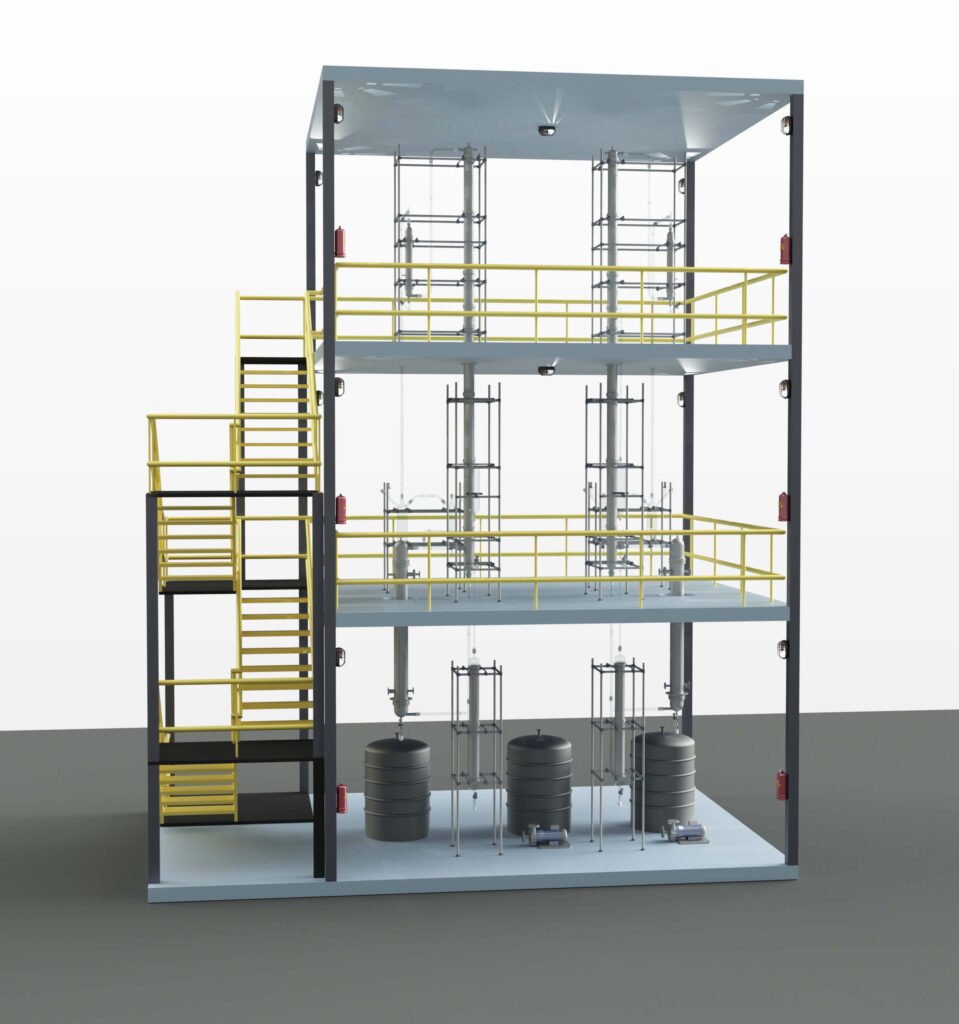Anhydrous HCL Gas Generation Plant

capacities ranging from 5kg./hr. to 300 kg./hr by (CaCl2 Process) (Zero discharge-NIL effluents)
Hydrogen chloride gas is generally available in cylinders for laboratory use. , However, it becomes extremely expensive in industrial processing.
Ablaze Export Pvt Ltd. offer the Dry HCl gas generator from 10 kg/hr to 300 Kg/hr, with the assistance of fully skilled and professional specialists. , Due to the high demand in a wide range of sectors, our team develops HCl gas generator systems with excellent material efficiency and cutting-edge technologies. , Ablaze Export Pvt Ltd Technologies manufactures and supplies a wide variety of anhydrous HCl Gas Generation Plant.
Process Description:
Anhydrous HCL Gas Generation Plant By Calcium Chloride route
The plant has been designed as a continuous method to manufacture dry HCL gas through the process of distillation of 30% hydrochloric acid solution along with a co-current stream of Calcium chloride solution.
The azeotropic distillation column is fed with a 30% hydrochloric acid solution. In the heat exchanger, steam is used to pre-heat the feed. A co-current feed of purified calcium chloride is As a result of the calcium chloride breaking the azeotrope formed between HCL and water, almost all the HCL in the solution is released as gas.
Heat exchangers of the shell and tube form are designed as thermosiphon reboilers, with steam as the source of heat for the distillation and evaporation processes.
The steam from the boiler strips the gas required from the feed acid solution in the column. , The top product HCL gas is dried in a drying unit using an appropriate dehydrating agent. , The moisture content of the HCL gas product is estimated to be less than 0.001 per cent.
The bottom result of the column is a dilute solution of calcium chloride with some HCL content. , The dilute solution of CaCl2 is condensed in the evaporator and the re-concentrated solution of CaCl2 is recycled to the distillation column by pump).
The vapor from the evaporation process consists of water which is supposed to contain less than 1% of HCL. Until discharge, the water vapors are concentrated in the heat exchanger. The system preferred is very reliable. Once all operating conditions are stable and maintained; the rate of generation of HCL gas depends only on the hydrochloric acid (30 per cent) feed rate.
Many of the system's wetted components are made of corrosion-resistant materials (Glass and PTFE)
Salient Features
There is no effluent, there is no discharge, and the maintenance costs are the lowest.
Looking for Best Manufacturer of Glass Pilot Plants & Turnkey Projects?
